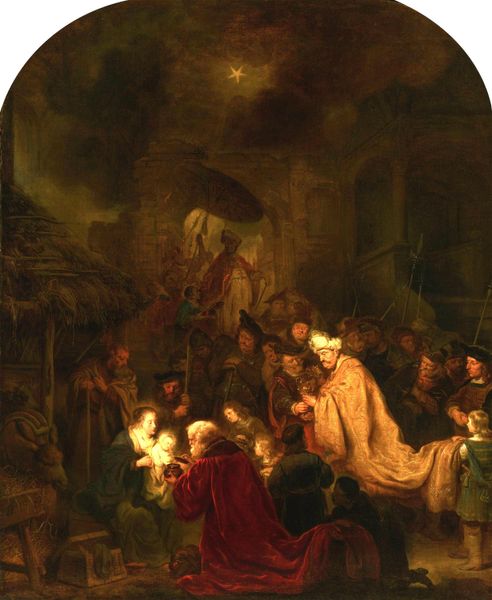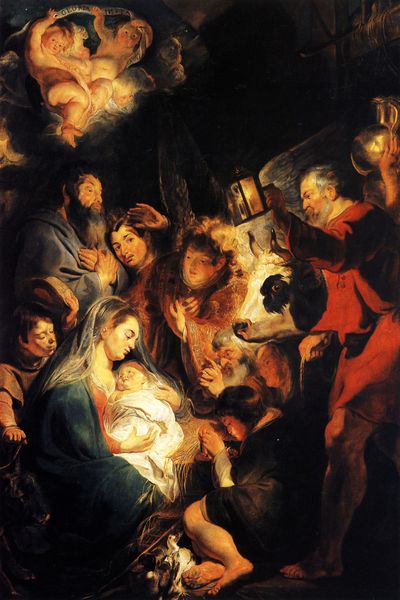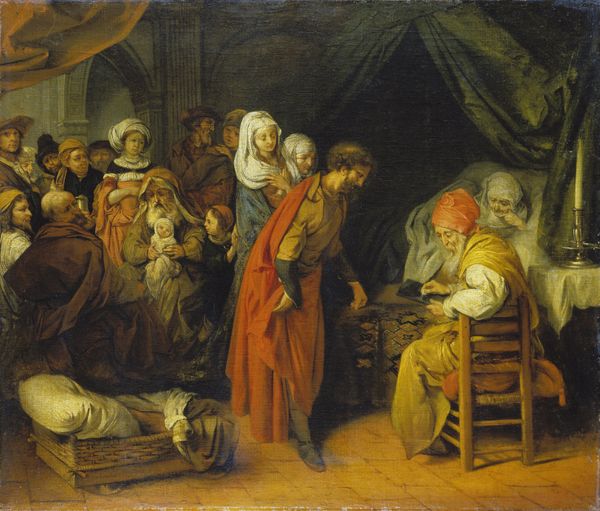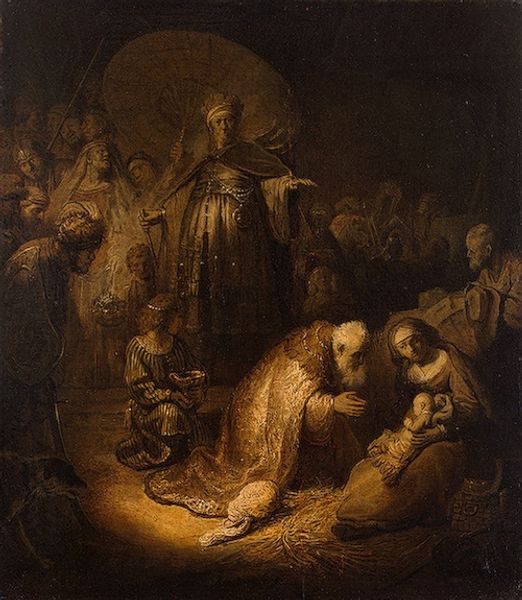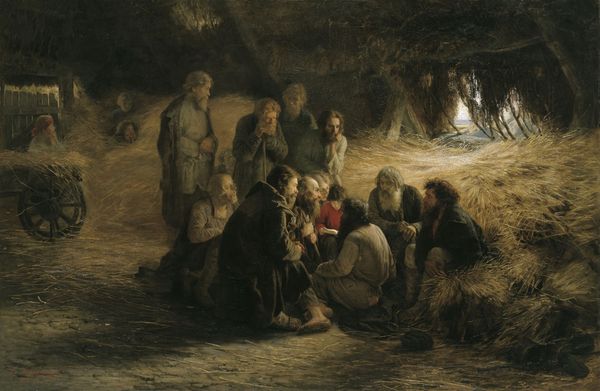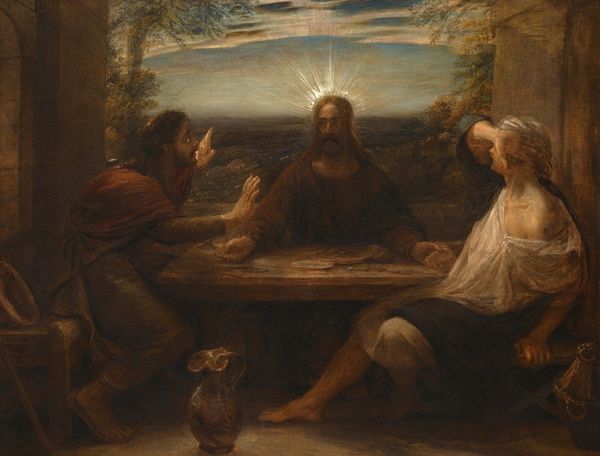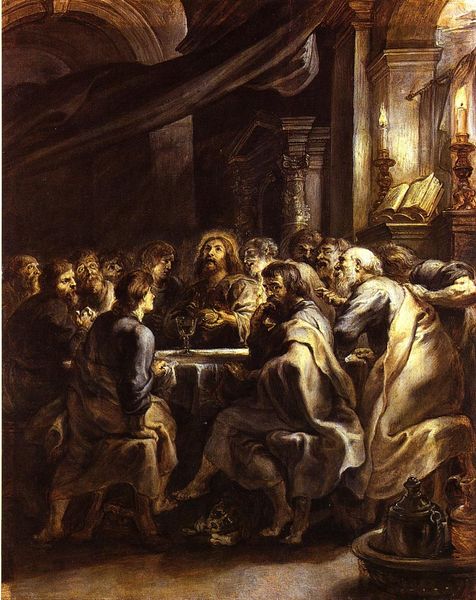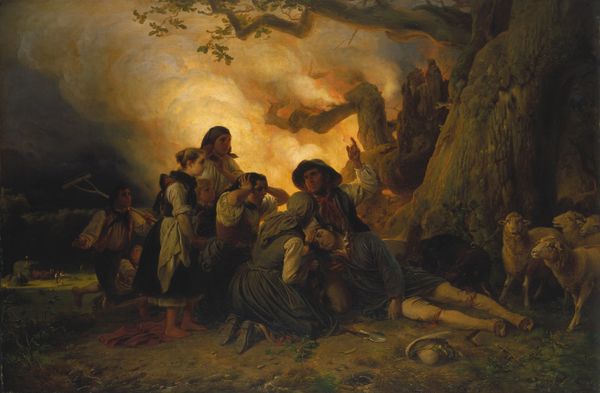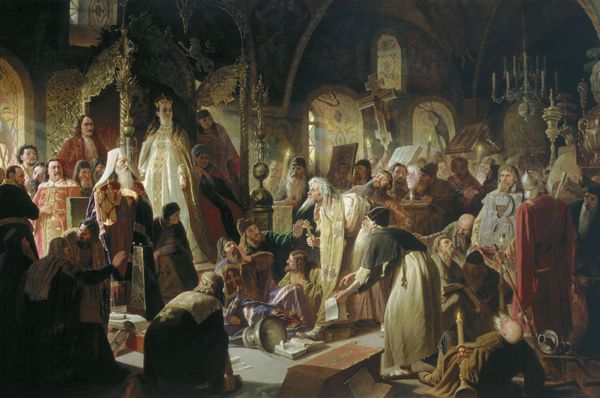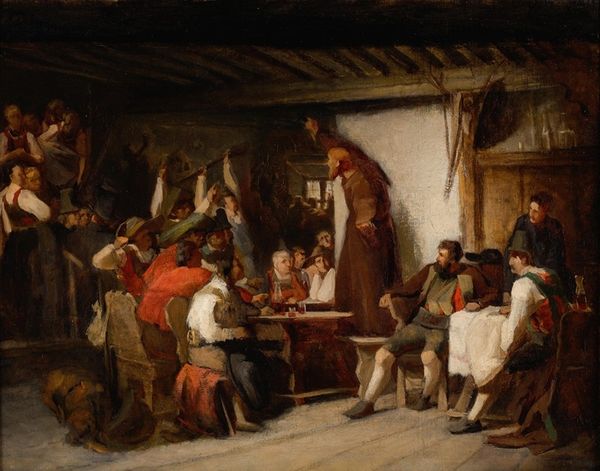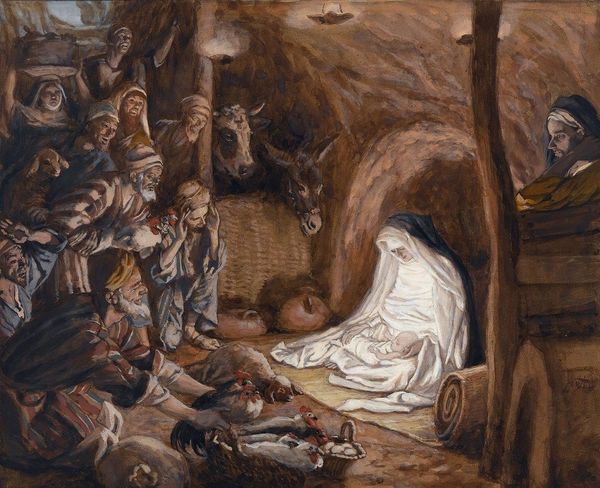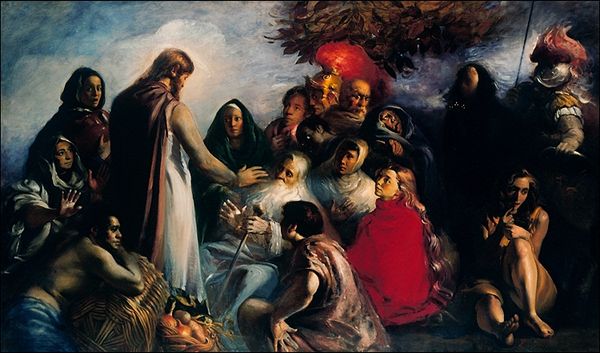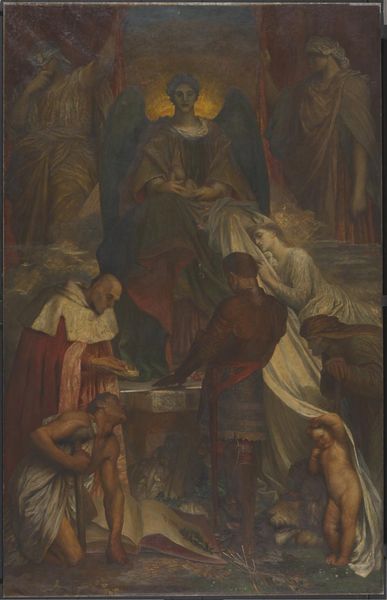
oil-paint
#
narrative-art
#
baroque
#
dutch-golden-age
#
oil-paint
#
figuration
#
oil painting
#
chiaroscuro
#
history-painting
Dimensions: 210 x 140 cm
Copyright: Public domain
Curator: Carel Fabritius painted "The Raising of Lazarus" in 1643, a Dutch Golden Age oil painting now hanging in the National Museum in Warsaw. It’s a powerful depiction of a key biblical moment. Editor: It’s somber. A group shrouded in darkness huddle around what seems to be a stone bier, and the dramatic lighting really amplifies the grim scene. Curator: Indeed. The chiaroscuro—the strong contrast between light and dark—is masterful, heightening the emotional intensity and the miracle itself. Notice how Lazarus is pallid against the gloom. It is as if death and the threshold to another world become a symbolic encounter. Editor: What’s remarkable to me is the sheer lack of adornment in the materials— the rough-hewn stone of the tomb, the simple garments. Fabritius seems to be deliberately grounding this supposed miracle in a palpable, working-class reality. Where did he source his pigments from, I wonder? How would that shape our view? Curator: Interesting. The rough quality almost makes it more accessible, doesn’t it? It focuses our attention on the psychological impact of witnessing such an event. The awestruck faces, the sheer disbelief, become the primary symbols in the artwork. Editor: Perhaps. Yet consider the socio-economic context: The Dutch Republic in the 17th century and the rise of merchant power, the demands for religious art shifting, creating an environment that privileges both grand narratives and material concerns. Was Fabritius commenting on faith in a material world? Curator: It certainly encourages one to question the cultural underpinnings of faith. The symbolism resonates so strongly with that human need to witness miracles in our daily existence, perhaps pointing to both skepticism and hope. Editor: Regardless of the ultimate intention, it’s clear that the stark reality rendered with earthy materials grants a sobering perspective to the raising of Lazarus. Curator: Yes, a painting deeply rooted in faith, yet speaking volumes to any viewer contemplating human emotion, mystery and what that resurrection suggests, down through time.
Comments
No comments
Be the first to comment and join the conversation on the ultimate creative platform.
